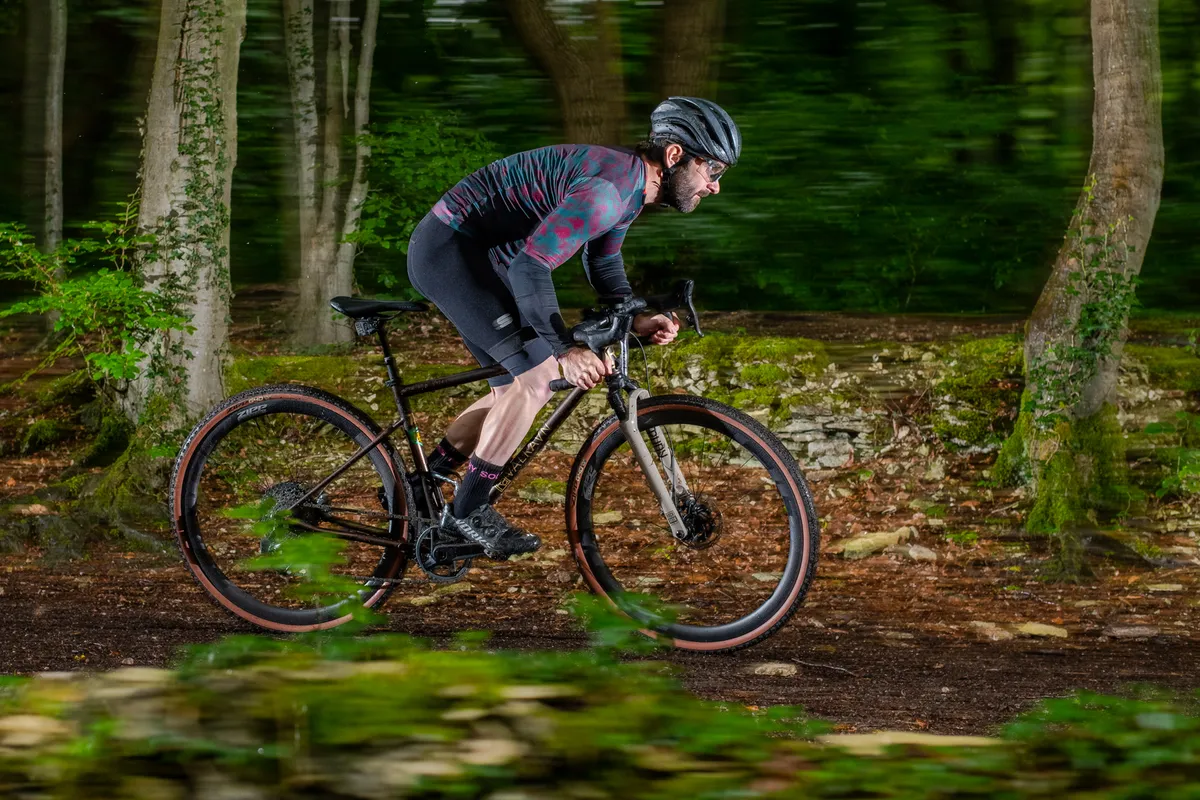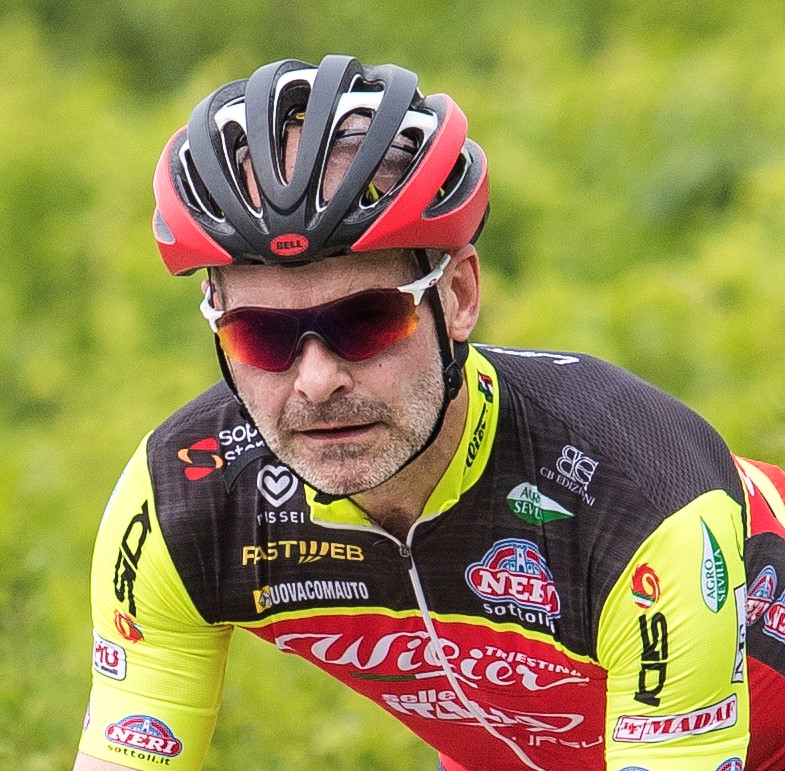For around a century, steel was the preferred material for bike frames. That changed towards the end of the 20th century, when first aluminium and then carbon fibre supplanted steel at the top of the frame-building tree.
However, steel has refused to die. In fact, it has progressed at pace and there’s a whole industry of frame builders making high-quality steel bikes that bear little relation to those of times past.
Namibian cyclist Dan Craven competed professionally for Rapha Condor and subsequently for Europcar. He chose a steel road bike for some of his races, winning the KOM competition on a steel Condor in the Tropicale Amissa Bongo race in 2011. His competitors were surprised by his modern steel bike.
“They all thought a steel bike would look completely different – like something Eddy Merckx used to ride – Instead of my bike, which has modern-looking tube dimensions and geometry, just much cleaner and more timeless lines,” says Craven, who founded the steel bike company Onguza Bicycles after retiring from racing.
We asked Craven and Dom Thomas, co-founder of Fairlight Cycles, the maker of the highly regarded steel Strael, what the allure of this metal is for the modern rider.
Ride quality

There’s something special about the ride quality of steel, which carbon and aluminium bikes don’t possess, however carefully they’re engineered.
Craven says: “If built correctly, steel bicycles can be extremely comfortable, as the material absorbs bumps and many people call it springy, forgiving and generally fun to ride.
“Together with that, the material is extremely long-lasting and easy to repair – which in this day and age feels like the sensible thing to be doing.”
Thomas agrees: “While we cannot compete with carbon frames in aerodynamic qualities, through hard work and significant investment in tooling and processes, we can produce frames that ride beautifully while offering utility and versatility that aero frames or the lightest possible carbon frames cannot.
“We also believe we can deliver a superior ride quality versus carbon fibre, for example. We focus heavily on developing tubing shapes and butting that serve a solely functional purpose: improving ride quality.”
Performance

Craven’s palmares when riding professionally show that steel remains a competitive option.
“When I was racing for Rapha Condor in 2010, I asked them about a modern steel bike and a few months later a demo was sent my way. I jumped on the bike and didn't notice any huge differences to my carbon racing bike at the time. It weighed a tiny bit more, but I was not able to tell the difference in the races,” he says.
Specialist steels

Although the ride quality of a steel bike frame is ultimately down to the builder, a fair component is due to the specific properties of the steel used. With so much experience in manufacturing steel tubing and a willingness to produce custom tubing to meet a maker’s requirements, steel makers can fine-tune their product to meet specific needs.
Fairlight’s Thomas worked with Reynolds on the fourth version of the Strael, which launched in February 2025.
“We collaborated with Reynolds Technology to create a new variation of 853, specifically designed for all-road riding: Reynolds 853 Road DZB," he says.
“Through detailed analysis, we ended up removing 280g from the frame compared to the Strael 3.0 (which was already a 5-star product), the equivalent of a jar of peanut butter.
“On top of that, we increased tyre clearance and created a number of elegant solutions around the frameset, including CNC-machined cable clips, 3D printed bottom bracket guides, and all-new CNC-machined dropouts with modular insert solutions,” Thomas says.
Craven works with that other storied steel producer, Columbus, which provided the tubing for the new Onguza Bliksem gravel bike.
“The tubes we use to build bicycles almost all come from Columbus in Italy,” Craven says. “Amazingly crafted, very specialist tubes. Very often with a wall diameter of 0.4 or 0.45mm – which is similar to very fine sewing thread. And also the technology to make this steel has changed and modernised over the last few years… it is not just carbon that has had technological advances.”
Practicality

Both Thomas and Craven emphasise the practicality of steel bikes. If your bike gets run over by a truck in South America, chances are someone will be able to fix it. Not so for other frame materials such as carbon, titanium or aluminium.
According to Thomas: “To build a practical bike (for touring, daily commuting or weekend adventures), we still believe steel is the best material. When considering cost, strength, ease of manufacturing, repairability and recyclability, it cannot be beaten.”
Longevity

That practicality translates into longevity for steel bike frames.
Craven says he still has the Condor bike he used to race on over a decade ago: “I still own that bike, a friend of mine usually rides it. Very few of my carbon bikes would still be pretty to look at, not in the way that bike still is.
“We firmly believe that steel as an environmentally friendly, longer-lifespan, more comfortable (if built correctly), classically beautiful material for bicycle frame building should be much more common out in the world.”
Patina

Both frame makers emphasise how a steel bike frame can mature gracefully, showing signs of its age and its manufacture without feeling old-fashioned.
Thomas says: “I have always been fascinated by objects that are practical and functional. I like things that are used and show signs of that use, where the object inherits character and becomes authentic. Timelessness, I suppose. I still love seeing a well-used steel touring bike for these reasons.
“I think to own any object where you can sense the care that has gone into it is a nice feeling. To then sense that utility and function have been given high priority makes it even more special. The hope is that you ride the product for a long time and get attached to it.”
Craven sums up: “What stands out to me is that you can buy a product that is so much more timeless and attractive, while probably being more comfortable, reliable and very often equally as fast. But above the comfort and the reliability, what I really love is being able to own something that I feel has so much more soul and a story.”




